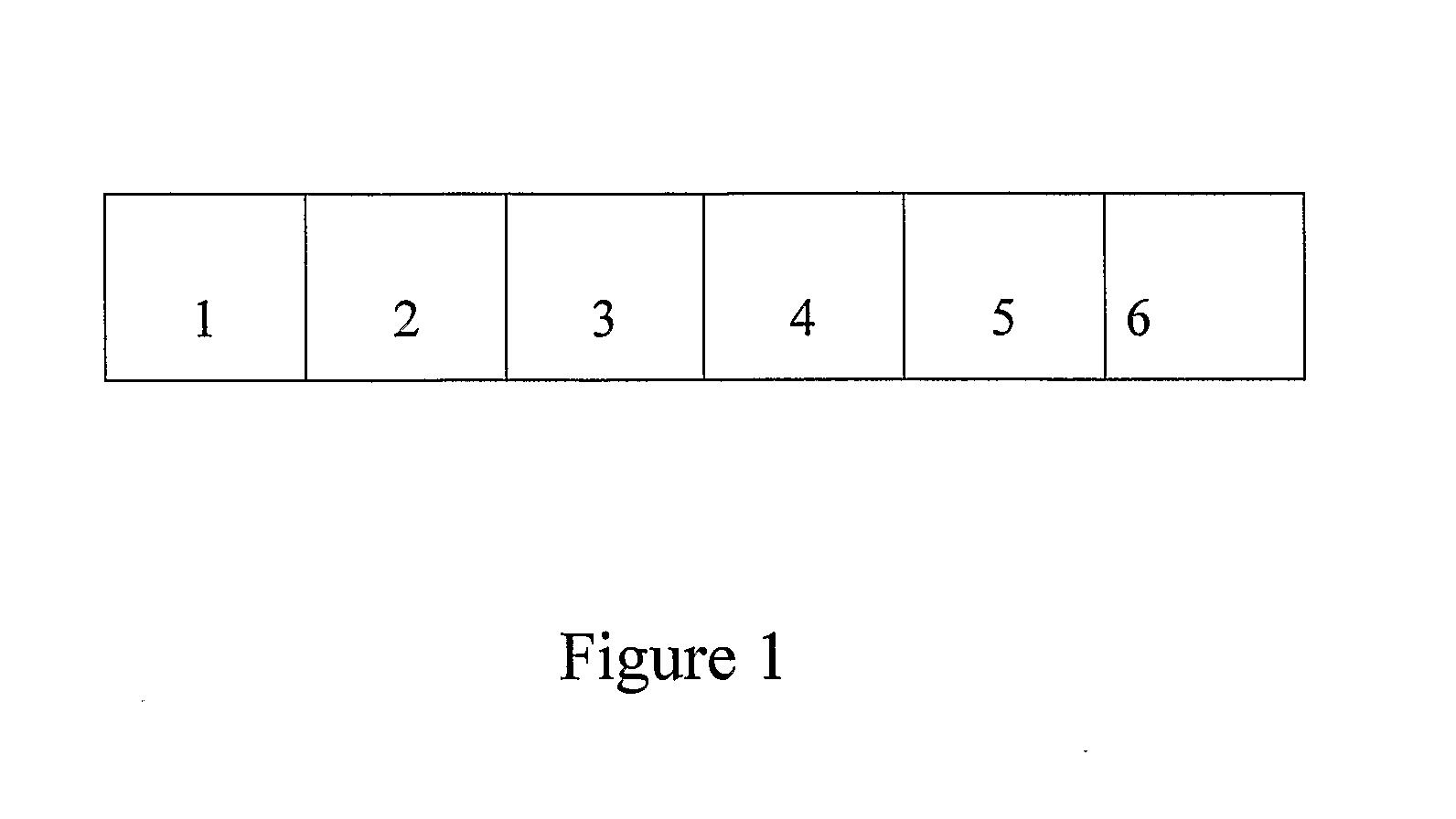Device and Method for Detecting the Presence of Hemoglobin in a Biological Sample
a biological sample and hemoglobin technology, applied in the field of hemoglobin detection devices and methods, can solve the problems of human blood, less sensitive than desirable, less accurate, and heavy bleeding,
- Summary
- Abstract
- Description
- Claims
- Application Information
AI Technical Summary
Benefits of technology
Problems solved by technology
Method used
Image
Examples
example 1
[0091]Reagent solutions were prepared based on Lam, U.S. Pat. No. 4,071,318, as follows:
Solution A:Water10mLTrisodium citrate213mgCitric acid147mgEDTA6.7mgSodium lauryl sulfate67mgMethyl sulfone667mgAcetone1.67mLSolution B (indicator):Tetra methyl benzidine (TMB)26.7mg dissolved inDimethylsulfoxide1.67mLSolution C (substrate):Cumene hydroperoxide133.3mg6-methoxy quinoline33.3mgTriethanolamine borate667mgSolution A5mL
[0092]To prepare reactive paper, solutions A, B and C were mixed just before use and added to Whatmans # 1 paper until the paper was soaked. The impregnated reactive paper was hung vertically to drain excess liquid and dried in a warm air current for approximately 30 minutes. The activity of the reactive paper was confirmed by diluting blood obtained from a finger prick in water and adding the dilutions to small pieces of the reactive paper. A 1 / 100 dilution gave an instant strong blue-green color, 1 / 1000 produced a strong blue color, 1 / 10,000 produced a slower developin...
example 2
[0097]For long term stability of the FOBT test strip, the substrate and indicator regions were prepared and laminated separately in a test strip constructed as shown in FIG. 3 as a modification of the test strip shown in FIG. 2A.
[0098]In the test strip of FIG. 3, pad A is the sample application pad, pad B1 is the substrate region and pad B2 is the indicator region. The test strip is prepared as described in Example 1, using substrate paper B1 and indicator paper B2 instead of reactive paper B, as follows:[0099]Substrate paper B1: Solution C was prepared, soaked into Whatman's #1 filter paper and drip-dried.[0100]Indicator paper B2: Solutions A and B were mixed, soaked into Whatman's #1 filter paper and drip-dried.[0101]Both papers B1 and B2 were then fully dried in forced air at low heat.
[0102]10 μL of human blood diluted 1 / 1000 in water was added to pad A of the test strip of FIG. 3 followed by three drops of a reagent comprised of Bovine serum albumin (3%), Ethanol (10%) and sodiu...
example 3
[0104]FOBT test strips, as described for Example 1, were used in combination with commercially available immunochemical (ICT) test strips (InSure FIT, Enterix Inc., N.J.). These ICT test strips are used for detection of human globin as an indicator of lower intestinal bleeding.
[0105]The two test strips (FOBT and ICT) were laid end to end so that the origin of the ICT strip was in contact with pad A of the test strip as described in Example 1. 10 μL of a 1 / 1000 dilution of human blood in water was added to pad A, followed by four drops of the reagent described in Example 2. The sample migrated in both directions from the point of application and both tests developed a positive result. When water containing diluted blood taken from a beef sample was tested in the same manner it gave a positive result with the FOBT test strip (i.e., positive for hemoglobin), but a negative result with the ICT test (i.e., negative for human globulin). Water alone gave a negative result with both tests.
PUM
 Login to View More
Login to View More Abstract
Description
Claims
Application Information
 Login to View More
Login to View More - R&D
- Intellectual Property
- Life Sciences
- Materials
- Tech Scout
- Unparalleled Data Quality
- Higher Quality Content
- 60% Fewer Hallucinations
Browse by: Latest US Patents, China's latest patents, Technical Efficacy Thesaurus, Application Domain, Technology Topic, Popular Technical Reports.
© 2025 PatSnap. All rights reserved.Legal|Privacy policy|Modern Slavery Act Transparency Statement|Sitemap|About US| Contact US: help@patsnap.com



